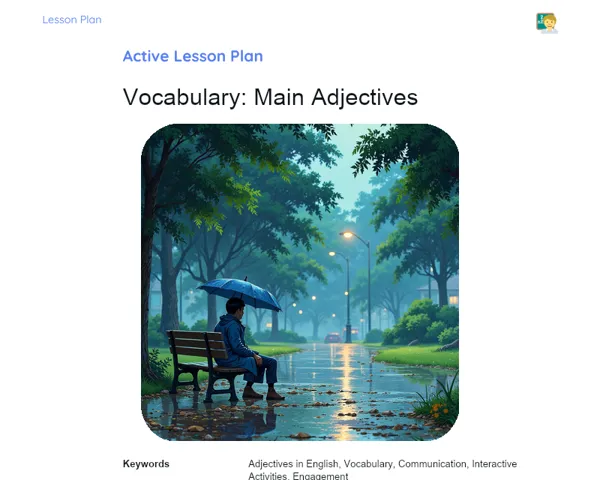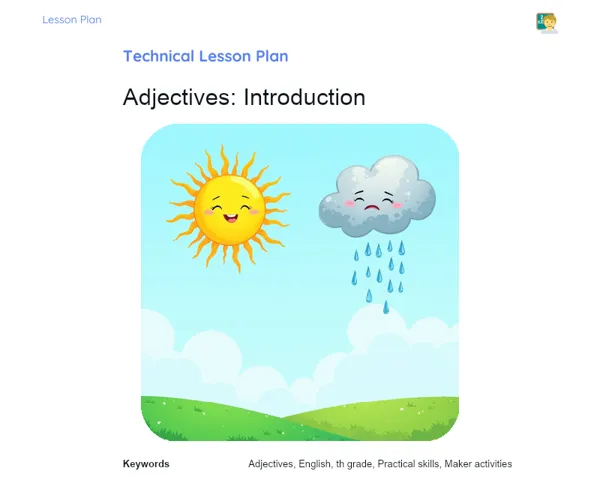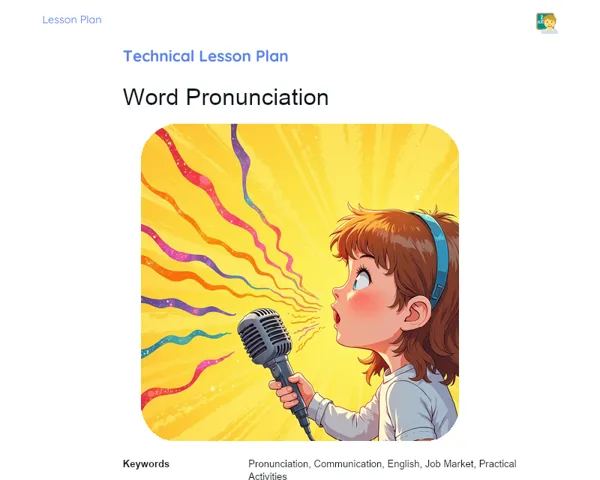Lesson Plan Teknis | Reading and Text Comprehension
| Palavras Chave | Reading in English, Text comprehension, Text interpretation, Job market, Practical activity, Critical thinking, Keywords, Idiomatic expressions, Contextual inference, Critical analysis, Mini challenge |
| Materiais Necessários | English news articles, Printed copies of texts, Short video about reading in professions, Projector or TV for video display, List of multiple-choice questions, Papers and pens, Whiteboard and markers |
Objective
Duration: (10 - 15 minutes)
The aim here is to help students grasp how to identify and interpret information in English texts, which are vital skills for both academic success and real-world job applications. It's essential for learners to understand how these skills translate into practical situations, such as analysing documents, emails, and other forms of written communication in a workplace environment.
Objective Utama:
1. Develop the skill to identify crucial information in English texts.
2. Enhance the ability to interpret texts and respond to questions based on comprehension.
Objective Sampingan:
- Encourage critical thinking while engaging with English texts.
- Foster interactive and contextualised English reading practice.
Introduction
Duration: (10 - 15 minutes)
This stage aims to ensure that students grasp the objectives of recognising and interpreting information in English texts, vital skills for both academic and practical scenarios in the job market. It's crucial for students to comprehend how these skills can be employed in real situations, like analysing documents, emails, and written communication in professional settings.
Curiosities and Market Connection
Did you know that most of the content on the internet is in English? Plus, many large corporations use English as their primary language for communication, both internally and externally. Skills in reading and comprehension are often essential in fields like IT, marketing, international trade, and tourism. Professionals who excel in these areas have access to a wider range of job opportunities and can engage effectively with colleagues and clients from around the globe.
Contextualization
Being able to read and comprehend English texts is crucial in today’s interconnected world. Whether it’s for accessing online information, understanding product manuals, communicating while abroad, or specifically in the workplace, the ability to interpret English texts creates opportunities for academic success and professional advancement, helping students stand out in a competitive job market.
Initial Activity
Provocative question: 'How many of you have ever had to translate an English text to get an important message across?' Short video: Play a 3-minute clip illustrating how reading in English is applied in various careers, such as reviewing research articles, corporate emails, and market analytics.
Development
Duration: (40 - 45 minutes)
The goal here is to equip students with reading and interpretation strategies for English texts in a hands-on and collaborative environment. Through the mini challenge and fixation exercises, learners will develop their critical reading skills, expand their vocabulary, and share knowledge with each other, getting ready to apply these skills in the job market.
Topics
1. Identifying main and supporting ideas in English texts.
2. Recognising keywords and phrases.
3. Contextual inference strategies.
4. Critical analysis of English texts.
Thoughts on the Subject
Guide students to consider the significance of understanding English texts not only in academia but also for thriving in their careers. Discuss how being able to interpret texts can enhance communication in multi-national workplaces, improve problem-solving abilities, and lead to opportunities in international careers.
Mini Challenge
Text Interpretation Challenge: Analyzing News Articles
Students will break into groups and receive various English news articles. Each team must read and analyze their article, highlighting key ideas, keywords, and phrases. They will then prepare a short presentation to share their insights with the class.
1. Divide the class into groups of 3 to 4 students.
2. Hand out different English news articles, making sure each group gets a unique one.
3. Instruct groups to read through their article and discuss to pinpoint main ideas, keywords, and phrases.
4. Support the groups in crafting a 5-minute presentation to share their findings with the class.
5. Encourage students to ask questions during presentations and discuss techniques used to interpret the texts.
Cultivate the skill of interpreting English texts through a hands-on and cooperative activity, promoting the sharing of knowledge and strategies among students.
**Duration: (30 - 35 minutes)
Evaluation Exercises
1. Provide a list of multiple-choice questions based on a short English text focusing on identifying main ideas, keywords, and contextual inferences.
2. Ask students to summarize the text in a paragraph, highlighting the primary and secondary ideas.
3. Suggest a matching exercise where students pair terms or phrases from the text with their meanings or synonyms.
Conclusion
Duration: (10 - 15 minutes)
This stage aims to give a reflective and cohesive end, where students can solidify their understanding, realise the practical use of the skills they've developed, and feel encouraged to keep improving their reading and interpretation abilities in English texts.
Discussion
Group discussion on the theme, reflection, challenges, exercises, and applications: Facilitate a discussion where students can reflect on how the skills of reading and interpreting English texts were utilised during activities. Encourage them to share their experiences and strategies from the mini challenge. Explore how these skills can be beneficial in the job market and everyday tasks like reading emails, scientific articles, and business reports.
Summary
Summary of key points: Recap the essential concepts discussed in the lesson, such as the significance of reading and understanding English texts, identifying main and secondary ideas, recognising keywords and phrases, and employing contextual inference strategies.
Closing
Wrapping up the lesson: Clarify how this class merged theory with practice, highlighting the relevance of reading and comprehension skills in English not only academically but also in professional contexts. Stress the importance of continuously honing these skills to be proficient and competitive in the global job market. Thank everyone for their participation and effort in the lesson.



